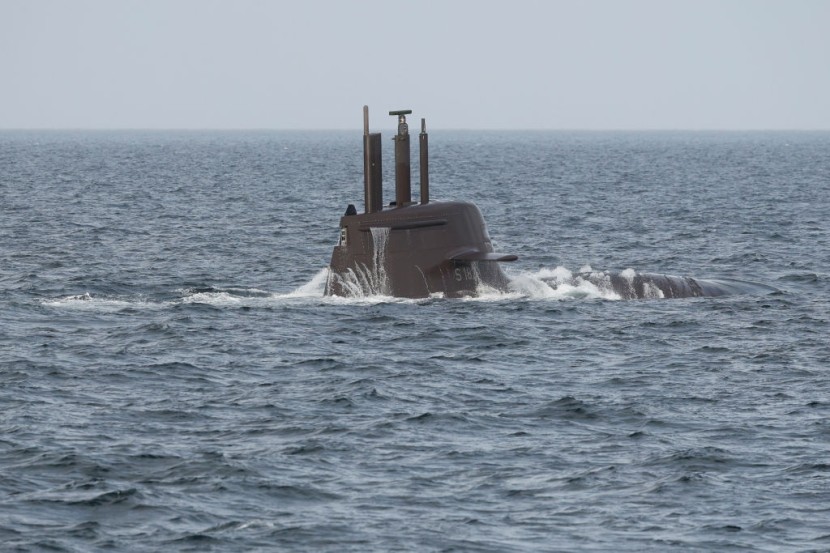
The new underwater kamikaze drone 'Marichka' is tested prior to its deployment against Russian President Vladimir Putin's navy, as captured on footage.
The newly designed torpedo, capable of carrying approximately 1,000 pounds of explosives, will be launched against Russian warships and submarines as Ukraine continues to repel Vladimir Putin's navy in the Black Sea.
Ukraine's Game-Changer: Underwater Kamikaze Stealth Drone
It is also anticipated to target the $3.64 billion Crimean Bridge, a vital Russian supply route into Ukraine that Kyiv's forces have already struck twice during the conflict, which the Russians have only partially repaired.
The footage depicts the 20-foot-long, $430,000 sea weapon being tested in the water prior to its deployment at a top-secret location. It is a creation of Ammunition. Volunteers from Ukraine possess immunity to Russian radio-electronic warfare systems, rendering them largely "invisible to the adversary."
In addition, it has a unique communication system with the operator that allows the submersible to be controlled from vast distances and depths. It is an innovation distinct from Ukraine's 'Sea Baby' drone, which has been employed against the bridge and other vessels.
The Marichka drone, according to its manufacturers, "cannot be detected by radars, scanners, or echo sounders" and has a range of approximately 620 miles, which is sufficient to strike critical Russian targets stationed around occupied Crimea in the Black Sea.
The submarine drone can be used to strike enemy targets but also for reconnaissance, and has the capacity to loiter on standby mode in the water before being directed at a target. To bolster its arsenal, and in the face of Russia's superior long-range missiles, Ukraine has taken to manufacturing drones, which have proved to be one of the deadliest and most prevalent weapons since Putin's invasion.
According to The Economist, an army of volunteers constructs up to 90 percent of Ukraine's military drones in garages and warehouses scattered across the country, with approximately 200 drone start-up companies now functioning within its borders.
The majority of drones are deployed above land by soldiers who can fly them with pinpoint precision to drop munitions on Russian positions, destroy trenches and shelters, or crash explosive-laden drones into concealed targets. According to The Sun, the high-tech weapon possesses reconnaissance capabilities and the ability to loiter in inactive mode prior to engaging targets.
It differs from the 'Sea Baby' drone, which can travel 500 miles and transport 300 kilograms of explosives and is responsible for a spate of audacious attacks on Russian vessels over the past few months.
Marichka vs. Sea Baby Drone
The Marichka has been added to Ukraine's arsenal of ambitious, experimental drones after Kyiv dramatically increased production of the do-it-yourself armaments.
The nation's drone revolution has generated some of the most devastating weapons of the conflict so far and provided a critical answer to Moscow's superior long-range missiles. Using 3D printers, readily available parts, and donated materials, game-changing weapons are being cobbled together in dormitories, garages, and covert factories across Ukraine.
And recently, newly designed maritime drones have taken center stage in the conflict, instilling dread in the formerly Russian-dominated Black Sea. In their extraordinary campaign to end Putin's naval superiority, Ukraine's sea drone pilots have been labeled the "new Dambusters."
On September 16, a 'Sea Baby' drone violently struck a Russian missile hovercraft, making it the fourth Russian vessel to be damaged in the preceding three days. Samum, a Black Sea vessel, had to be towed into Sevastopol harbor after suffering "significant damage" from the attack.
Per Daily Express, it poses a formidable menace to hostile targets, with a warhead weighing approximately 200 kilograms. Notably, the drone has been designed to resist electronic warfare systems, providing a significant advantage against potential foes.
Given the prospective impact of the drone on Ukraine's defense strategy, this expenditure appears reasonable. The dual-purpose functionality of the Marichka drone is one of its distinguishing characteristics. It can also be used as a kamikaze drone when necessary.
In addition, the Marichka is outfitted to conduct reconnaissance missions, thereby enhancing Ukraine's capacity to collect vital intelligence. The successful demonstration of the Marichka drone represents a major milestone in Ukraine's efforts to bolster its defense capabilities and protect its national security from Russian aggression.








